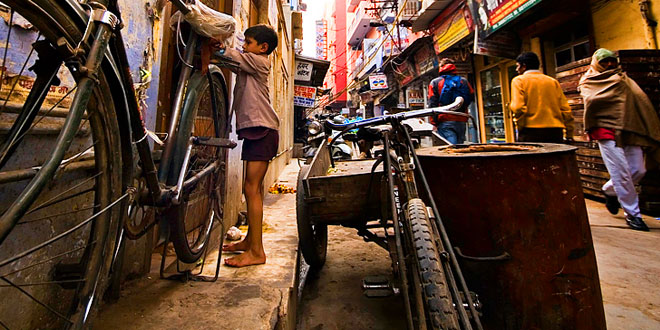Question: Who wrote the novel ‘Debganer Martye Aagaman’?
Answer: Durgacharan Ray
Question: What was the theme of the novel ‘Debganer Martye Aagaman’?
Answer: The basic aim of the novel was to explain the city life of Calcutta.
Question: What is urbanization?
Answer: Development of cities and towns is known as urbanization.
Question: ‘Three historical processes have shaped modern cities in decisive ways’. What were these processes?
Answer: The rise of industrial capitalism the establishment of colonial rule over large parts of the world and the development of colonial rule over large pans of the world.
Question: What factor helped in the development of ancient cities?
Answer: Ancient cities could develop cue to an increase in food supplies which made it possible to support a wide range of non-food producers.
Question: Name any three ancient cities.
Answer:
- Ur
- Nippur
- Mohenjodaro
Question: Why were the migrants attracted towards London and Manchester?
Answer: Because jobs were easily available to workers in the textile mills.
Question: Who was Henry Mayhew?
Answer: He was a writer and a philosopher who wrote several volumes on the London labour and compiled long lists of those who made a living from crime.
Question: Who are philanthropist?
Answer: Someone who works for social upliftment and charity, donating time and money for the purpose.
Question: Mention any two steps which were taken by the government to check criminalisation of London.
Answer:
- The authorities imposed high penalties for crime and offered work to those who were considered me ‘deserving poor’.
- The Compulsory Elementary Education Act was passed through which the children were kept out of Industrial work.
- Population of criminals was counted and their activities were watched.
Question:Who wrote The Bitter Cry of Outcast London’?
Answer: Andrew Mearns.
Question:Name the acts through which children were kept out of industrial work in London.
Answer:
- Compulsory Elementary Education Act in 1870.
- Various Factories Acts.
Question: Who conducted the First social survey of low skilled London workers?
Answer: Charles Booth
Question: What was Temperance Movement?
Answer: A largely middle class led social reform movement which emerged in Britain and America from the nineteenth century on wards, it identified alcoholism as the cause of the nun of families and society, and aimed at reducing the consumption of alcoholic drinks particularly among the working classes.
Question: Mention any four factors responsible for increase in criminal activities in London in the 1870s.
Answer:
- Increasing population
- Low wages
- Lack of education
- Pushing large number of children into low paid work by their parents.
Question: Who conducted a survey in London in 1887? What was its result?
Answer: In 1887, Charles Booth conducted a survey and concluded that 1 million landowners were very poor and were expected to live only upto an average age of 29 These people were more likely to die in a workhouse, hospital or lunatic asylum.
Question: Who was Ebenezer Howard?
Answer: He was an architect and a planner who developed the idea of the garden city, a pleasant space full of plan’s and new. where people could live and work. He believed that this would also produce better quality citizens
Question: Who developed the principle of the Garden City?
Answer: Ebenezer Howard
Question: When was the London Underground railway started?
Answer: The first section of the Underground railway in London opened on 10th January, 1863 between Paddington and Farrington street in London
Question:How did underground railway help in solving housing problem?
Answer: London Underground partially solved the housing crisis by carrying large masses of people to and fro the city.
Question:Name the presidency cities of colonial India.
Answer: Calcutta and Madras.
Question: Mention any two factors which promoted migration to Bombay.
Answer:
- It was the hub of trade in opium and cotton,
- Bombay was also at the junction head of two major railways. The railways encouraged a large number of people to migrate into the city.
Question: Under whose control was Bombay in the 17th century? Why the control of island passed into British hands?
Answer: In the seventeenth century. Bombay was a group of seven islands under Portuguese control In 1661 control of the islands passed into British hands after the marriage of Britain’s King Charles II to the Portuguese princess.
 Class Notes NCERT Solutions for CBSE Students
Class Notes NCERT Solutions for CBSE Students





